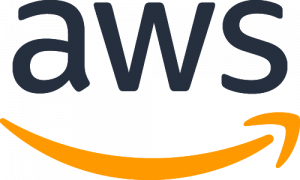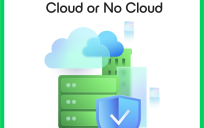This post is an excerpt from GovLoop’s recent guide, “The Top 30 Government Innovations of 2017.”
An interview with Doug VanDyke, Director of Federal Civilian and Nonprofits, Amazon Web Services
By now, much of the public sector is aware of the enormous benefits that cloud computing technology can provide. Cloud computing helps government organizations increase innovation and resiliency while reducing costs; it also helps agencies become more agile and innovate in order to better serve their citizens and achieve their missions. But what’s not as well known is the fact that government organizations leveraging cloud are also spurring innovation in the private sector.
To better understand the newer ways in which cloud computing is spurring innovation and agility in government, GovLoop sat down with Doug VanDyke, Director of Federal Civilian and Nonprofits at Amazon Web Services.
“One of the greatest advantages of cloud computing is enabling the government to use the newest innovations at a very rapid pace,” VanDyke said. “This means that cloud services can help government agencies deliver their mission more efficiently and modernize their infrastructure without a substantial upfront capital investment. This circumvents the long procurement process for hardware and other technology so the government can undertake more projects much faster.”
In 2018 and beyond, continued use of cloud computing will enable government to innovate even more, VanDyke pointed out. “By having quick access to secure and highly scalable resources and infrastructure, the government can experiment. Cloud gives them the ability to scale up multiple environments at the same time to figure out which works best for their needs.”
One example of this innovation is the Center for Medicare and Medicaid Services (CMS). Right now, CMS is working to bring online five years of records, from 50 states, totaling over 70 terabytes of data. “In the past, moving this kind of data would create a log jam,” VanDyke said. “But moving this data to the cloud, and allowing access to this data for analytics, is going to enable CMS to converge disparate datasets and crack down on waste, fraud, and abuse. They will have new insights into their data.”
Additionally, VanDyke explained that cloud is beneficial for agencies because it pushes them towards a more agile method of project management.
“For a long time, government has been doing waterfall projects. These projects take many years and millions of dollars to determine if they will be successful or not,” he said. “Unfortunately, many of these have failed at a tremendous expense to government agencies and taxpayers. But with cloud computing and lower costs, the government can figure out what areas are going to succeed and which areas aren’t, and very quickly course correct without large investment failures.”
But the trend VanDyke was most excited for in cloud computing was the ability for large government datasets hosted in the cloud to spur private sector innovation as well as public sector innovation.
One example he cited was NEXRAD (Next-Generation Radar), a network of 159 high-resolution S-band Doppler weather radars operated by the National Weather Service (NWS), detecting precipitation, atmospheric movement, and disseminating that data in 5-minute intervals from each site. Using the AWS Cloud, VanDyke explained, it enables exact severe storm prediction, so researchers, commercial enterprises, and private sector startups can study and see what the impact of weather is going be across multiple sectors.
“Many government datasets are available on the AWS Cloud,” VanDyke said. “These datasets can be accessed by researchers, entrepreneurs, or anyone who is interested in analyzing how federal tax dollars are spent, and this spurs a lot of creativity in the private sector.”
Whether through open data initiatives, public safety modernization, education reform, citizen service improvements or infrastructure programs, more and more local governments are turning to AWS to provide the cost-effective, scalable, secure, and flexible infrastructure necessary to make a difference.
The AWS Cloud provides solutions to support government’s unique requirements and missions, and also helps create an environment for innovation, VanDyke said. “Our cloud services can be employed to meet mandates, reduce costs, drive efficiencies, and increase innovation across civilian agencies, the intelligence community, and more.” In an era of doing more with less, cloud computing will help government agencies meet their mission and deliver better services, at a lower cost, to citizens.
Find GovLoop’s top 30 government innovations here.






Leave a Reply
You must be logged in to post a comment.